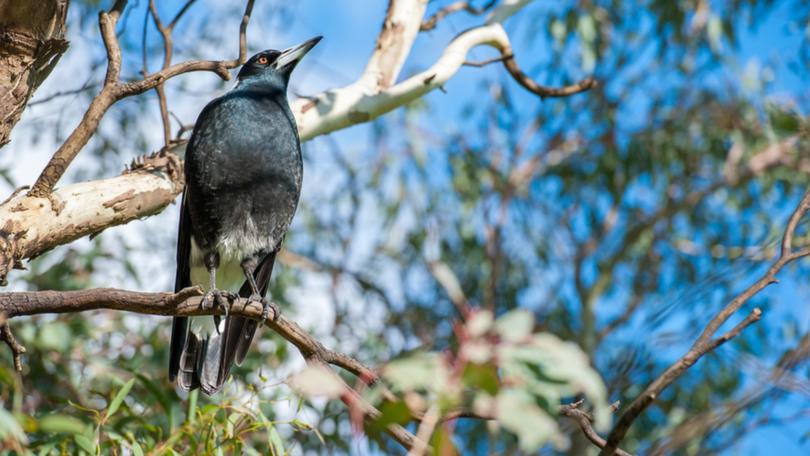They come from above: here’s why magpies, magpie-larks and lapwings swoop in spring

If you live in Australia or New Zealand, the coming of spring is a mixed blessing. The days get warmer. Flowers bloom. Birds nest.
It’s this last change which can be a problem. Nesting makes male birds from species such as magpies, magpie-larks and masked lapwings (also known as plovers) territorial and protective – and willing to dive-bomb humans.
One species is notorious – the Australian magpie. This iconic black and white songbird is a familiar sight in cities and towns across both Australia and New Zealand, as it was introduced to New Zealand in the 19th century, where it is now common. The magpie’s strong beak and powerful wings can provoke fear amongst walkers, joggers and cyclists.
Sign up to The Nightly's newsletters.
Get the first look at the digital newspaper, curated daily stories and breaking headlines delivered to your inbox.
By continuing you agree to our Terms and Privacy Policy.This year, the swooping started early. More than 450 incidents were recorded on Magpie Alert before the formal start of spring. Most swooping incidents cause fear but not injury. Actual injuries occur 10-15% of the time. While some injuries come from claws or beak, many more occur when we try to flee and fall over. Very rarely, swooping can trigger more serious injuries or even death.
What’s behind swooping behaviour?
When a magpie swoops you, it’s defending its nest and chicks. It sees you as a potential threat.
Australian magpies start their breeding season in winter. They build basket-like nests of sticks and twigs which they line with soft materials such as grass and hair. Peak breeding season comes between August and November when eggs and chicks are in the nest. These four months are when swooping increases.
The good news is swooping season is usually only intense for a few weeks while the chicks are most vulnerable in the nest, which usually happens sometime between August and October.
Fast-moving cyclists are seen by these birds as a particular threat. Data from MagpieAlert, the public database of attacks, indicates cyclists are the number one target. But humans aren’t being singled out — magpies can swoop other birds to defend their territory and suitable nesting sites, or protect their young from predatory birds, cats, or foxes.
Generally, male magpies will perform a warning swoop when they perceive danger. If that’s ignored, they can swoop a second or third time. This is often combined with alarm calls and clapping their beak to make warning sounds.
Only around 10 per cent of nesting magpies actually swoop humans. But if you’ve been swooped before, you’re more likely to be swooped again. Magpies can recognise and remember human faces, and have been known to swoop the same people year after year.
Magpies tend to swoop from above. But magpie-larks — the unrelated black and white bird also known as peewees or mudlarks — can actually do more damage. When they swoop, they come in from the front and can go for the eyes.
Other swooping birds in Australia include noisy miners — small native grey and yellow birds common in urban areas. These aggressive honeyeaters work as a pack to drive away threats — which can include us. They can also attempt to get food from unsuspecting picnickers. Then there are the masked lapwings, who nest on the ground and can swoop if you get too close.
Swooping birds around the world
While Australia’s magpie has an international reputation for swooping, it’s not the only notorious species.
In North America, red-winged blackbirds are known to swoop during their breeding season, while the American crow can be very territorial during spring. If you anger an American crow, the highly intelligent bird will remember your face — and can pass down its grudge to the next generation.
While seagulls around the world can swoop, it’s not done to drive you away but rather to steal your hot chips.
The Australian magpie was named after the Eurasian magpie due to their similar black and white colouring. But the Eurasian magpie does not swoop, even though it’s related to crows. The Australian magpie is not from the crow family — its closest relatives are butcherbirds — songbirds with strong beaks.
The importance of songbirds
Barring seagulls and masked lapwings, these swooping species have one thing in common – they’re songbirds, meaning they belong to the order Passeriformes. This should come as no surprise given the Australian magpie’s warbling repertoire of calls and songs.
Songbirds make up nearly half of all bird species globally. This enormously influential group of birds actually evolved in Australia.
This group of birds are highly varied, from tiny fairy-wrens to larger corvids such as crows. They play an essential ecological role in our natural world, acting to disperse seeds, clean up dead creatures by scavenging, helping to pollinate plants, eating insects and pests and returning nutrients to plants via their poo.
Be alert, not alarmed
If you’re weary of being swooped, choose a different path for a couple of weeks until the chicks have left the nest.
Magpies often nest in the same area each year, so if you’ve been swooped before, consider avoiding that route.
Protective gear such as sunglasses and a hat can help you avoid injury. Wearing sunglasses on the back of your head or sticking fake eyes to the back of your helmet or hat can help, as magpies do not like to be looked at when swooping.
If you are unlucky enough to be swooped, try not to run or scream as this can make you seem an even bigger threat. Instead, move out of the bird’s territory as soon as possible.
Meg Edwards, Lecturer in Wildlife Science, University of Southern Queensland
This article is republished from The Conversation under a Creative Commons license. Read the original article.
Originally published on The Conversation
